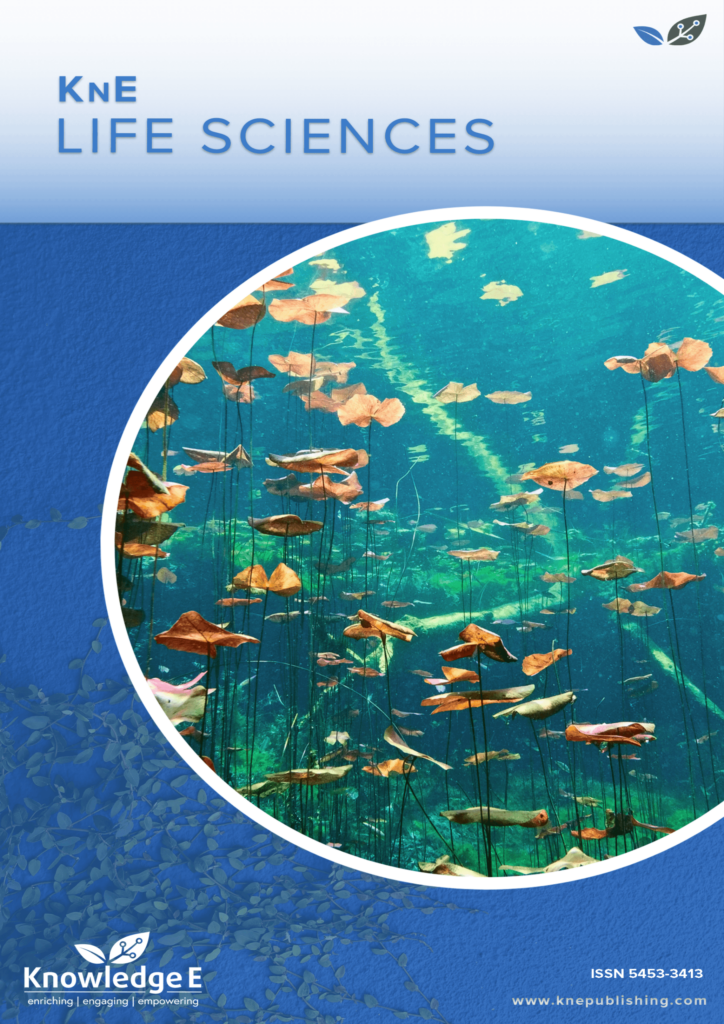
KnE Life Sciences
ISSN: 2413-0877
The latest conference proceedings on life sciences, medicine and pharmacology.
Isolation of Dihydroflavonol-4-reductase (DFR) Gene in Dendrobium helix cv. Pomeo Brown
Published date:Jul 11 2017
Journal Title: KnE Life Sciences
Issue title: The 4th International Conference on Biological Science (2015)
Pages:213-218
Authors:
Abstract:
Dendrobium helix cv. Pomeo Brown is one of the most attractive species in Spatulata section. This orchid is an epiphyte which has clustered stem, elliptic leaves, and erected flowers with brown petals. The brown color of D. helix cv. Pomeo Brown is due to the anthocyanin. Biosynthetic pathway of anthocyanin is regulated by several enzymes, including key enzyme dihydroflavonol-4-reductase (DFR) which is encoded by DFR gene. This study aimed to analyze the DFR gene from D. helix cv. Pomeo Brown by PCR using primer which were designed based on Dendrobium moniliforme. The sequences amplified using these primers could not be analyzed. Based on the sequence chromatograph, it can be suggested that the amplified DNA consists of several DFR fragments.
Keywords: Dendrobium helix cv. Pomeo Brown; anthocyanin; DFR gene.
References:
[1] Cribb., The antelope and latourea Dendrobiums.American: Kew Buletin, American. Kew
Buletin, USA, 1985.
[2] A. Millar and M. Roy Mackay, “Orchid of Papua New Guinea an introduction. Seattle and London,” in Mackay M. Orchid of Papua New Guinea an introduction, p. 47, University of Washington Press, Seattle and London, 1978.
[3] OBryne., “Lowland orchids of Papua,” in O’Bryne. Lowland orchids of Papua, p. 268, SNP Publishers, New Guinea., Singapore, 1994.
[4] A. Schuiteman, “A Guide to Dendrobium of,” in s (Borneo, p. 22, Natural History Publications, New Guinea., Kinabalu, 2013.
[5] N. Junka, S. Kanlayanarat, M. Buanong, S. Wongchaochant, and C. Wongs-Aree, “Analysis of anthocyanins and the expression patterns of genes involved in biosynthesis in two Vanda hybrids,” International Journal of Agriculture and Biology, vol. 13, no. 6, pp. 873–880, 2011.
[6] Y. Tanaka, Y. Katsumoto, F. Brugliera, and J. Mason, “Genetic engineering in floriculture,” Plant Cell, Tissue and Organ Culture, vol. 80, no. 1, pp. 1–24, 2005.
[7] K. Ying-To and CK. Wang, “Molecular breeding of flower color,” in Molecular breeding of flower color, pp. 300–310, Global Science Books: Taiwan, 2006.
[8] Y. Tanaka, F. Brugliera, and S. Chandler, “Recent progress of flower colour modification by biotechnology,” International Journal of Molecular Sciences, vol. 10, no. 12, pp. 5350–5369, 2009.
[9] W. Kunu, S. Thanonkeo, and P. Thanonkeo, “Cloning and expression analysis of Dihydroflavonol 4-reductase (DFR) in Ascocenda spp,” African Journal of Biotechnology, vol. 11, pp. 12702–12709, 2012.
[10] M. Hongmei and P. Margaret, “Anthocyanin Regulatory Structural gene expression in Phaleonopsis. Social Horticulture Science,” in Margaret P. Anthocyanin Regulatory Structural gene expression in Phaleonopsis. Social Horticulture Science, pp. 134–88, 134, 88–96, 2009.
[11] Y. Katsumoto, M. Fukuchi-Mizutani, Y. Fukui et al., “Engineering of the rose flavonoid biosynthetic pathway successfully generated blue-hued flowers accumulating delphinidin,” Plant and Cell Physiology, vol. 48, no. 11, pp. 1589–1600, 2007.
[12] C.-F. Liew, C.-S. Loh, C.-J. Goh, and S.-H. Lim, “The isolation, molecular characterization and expression of dihydroflavonol 4-reductase cDNA in the orchid, Bromheadia finlaysoniana,” Plant Science, vol. 135, no. 2, pp. 161–169, 1998.
[13] B. Winkel-Shirley, “Flavonoid biosynthesis. A colorful model for genetics, biochemistry, cell biology, and biotechnology,” Plant Physiology, vol. 126, no. 2, pp. 485–493, 2001.
[14] E. T. Johnson, H. Yi, B. Shin, B.-J. Oh, H. Cheong, and G. Choi, “Cymbidium hybrida dihydroflavonol 4-reductase does not efficiently reduce dihydrokaempferol to produce orange pelargonidin-type anthocyanins,” Plant Journal, vol. 19, no. 1, pp. 81–85, 1999.
[15] N. Shimada, R. Sasaki, S. Sato et al., “A comprehensive analysis of six dihydroflavonol 4-reductases encoded by a gene cluster of the Lotus japonicus genome,” Journal of Experimental Botany, vol. 56, no. 419, pp. 2573–2585, 2005.
[16] R. J. Griesbach, “The inheritance of flower color in Petunia hybrida Vilm,” Journal of Heredity, vol. 87, no. 3, pp. 241–245, 1996.
[17] AM. Reddy, RM. Francies, SKM. Rasool, and VRP. Reddy, “How genes paint flowers and seeds,” vol. 6, pp. 4722–4732, 2014.
[18] E. T. Johnson, S. Ryu, H. Yi, B. Shin, H. Cheong, and G. Choi, “Alteration of a single amino acid changes the substrate specificity of dihydroflavonol 4-reductase,” Plant Journal, vol. 25, no. 3, pp. 325–333, 2001.